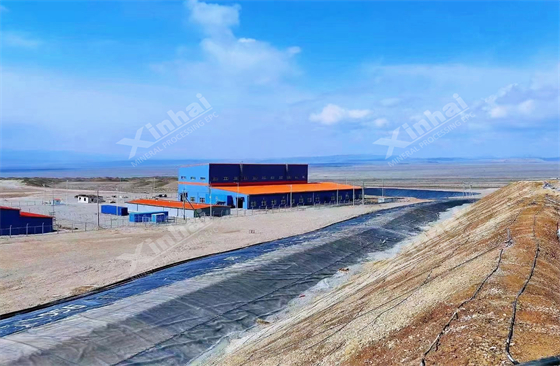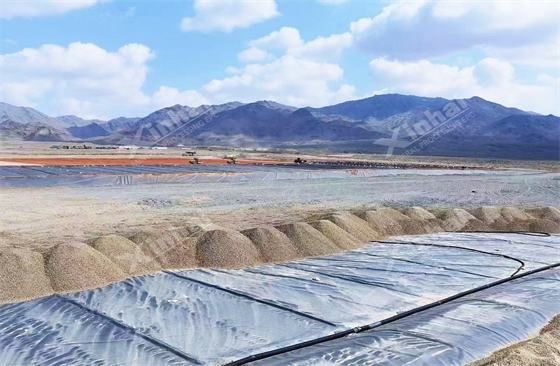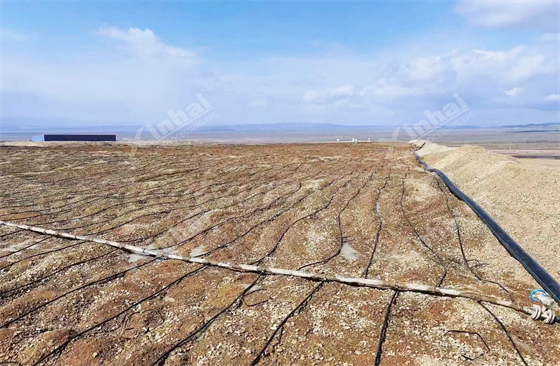
As gold grades decline globally and high-grade deposits become depleted, processes for extracting gold from low-grade gold ores are becoming particularly important.
Conventional gold extraction technologies (such as CIP and CIL) require high capital investment and complex infrastructure. When processing low-grade ores, the metal yield barely offsets the cost, making them unsuitable for low-grade (less than one gram per tonne) but reserve-rich regions.
In contrast, the gold ore heap leaching process represents a breakthrough because it significantly reduces the cost of recovering gold from low-grade but high-tonnage deposits. This is demonstrated by the simplicity of the design and equipment, quick return on investment, low energy and water requirements, and fewer environmental concerns (e.g., no tailings disposal required).
This paper will discuss this technology's importance and present a successful case study of a gold heap leach concentrator plant design.

Gold heap leaching process principle: gold heap leaching is the low-grade gold ore crushed to a specific size (or granulation), piled up in the asphalt, concrete or plastic materials such as paving leakage-proof bottom pad, with cyanide leaching chemicals or CNLITE environmental protection gold separation agent on the heap spray or infiltration, so that the gold dissolved, the gold-containing solution (precious liquid) from the heap of filtration, into the pool of precious liquid, through the precious liquid pump into the adsorption column, the activated carbon adsorption solution is the poor liquid and the poor liquid back to the reuse of. The solution after activated carbon adsorption is the poor solution, and the poor solution returns to the spraying system for reuse. Then, the steps of sedimentation and extraction are carried out.
Applicable ore types: ores with gold content as low as 0.3-1g/t.
Basic process: crushing and screening → setting up the heap leaching site → heap leaching of gold ore → adsorption → desorption and electrolysis → gold recovery

In gold mine development, the heap leaching process has gradually become an important choice for low-grade oxidized gold ore treatment due to its advantages of low investment, low operation cost and high resource utilization rate. The following is an in-depth analysis of these three advantages:
1. Low investment cost
There is no need for plant and large-scale equipment: The heap leaching process can be carried out in the open site, eliminating the need for investment in civil construction and equipment such as smelting workshops and thickening equipment.
Simple equipment configuration: The core equipment mainly includes a crushing system, seepage control system, and drip system, and the initial construction cost is much lower than that of the CIP/CIL process.
2. Low operating costs
Low energy consumption: Compared with conventional cyanidation gold extraction, heap leaching does not require high-temperature roasting or continuous stirring, so energy consumption is significantly reduced.
Low labour requirement: The process is based on automatic drip showers and natural percolation, which are easy to operate and require little daily maintenance.
Controllable chemical consumption: Heap leaching is mainly used for oxidized ores with few impurities and low adsorption, so the amount of cyanide agent used is relatively low.
3. High resource utilization
Processing of low-grade ores: The heap leaching process can economically process ores with a low gold content of 0.3-1g/t, realizing the maximization of resource utilization.
Suitable for reusing corners and waste ores: Heap leaching recovers secondary ores at the tail end of the mine or the mining boundary, improving the overall mining recovery rate.
Strong adaptability to environmental protection: Modern heap leaching processes are equipped with an HDPE impermeable layer and solution collection system, which can effectively control cyanide loss and meet the demand for green mine construction.

Malaysia's 1.2 million T/A gold heap leach plant is one of the many successful cases of Xinhai's gold heap leach beneficiation plant design. The following describes the process of this case.
The process flow of this design beneficiation plant: raw material screening, fine-grained granulation, heap design, drip drenching, precious liquid adsorption, desorption and electrolysis, smelting, and finally, getting the finished product gold ingot, the grade of which is in the range of 80-90%.

1. Crushing and screening
When processing surface oxidized ore in the first stage, the raw ore does not need to be crushed and goes directly into the circular vibrating screen for screening, 8-50mm materials are sent to the stockpile, and 0-8mm go into the buffer bin for granulation.
Later processing of underground primary ore requires two sections of closed-circuit crushing, crushing the ore to 0-50mm and screening it into 0-8mm and 8-50mm, respectively, for pelletizing and pile construction.
2. Pelletizing
The material is transported to the drum pelletizer by the belt feeder and belt conveyor at the bottom of the buffer bin. Cement is added simultaneously, and the belt sends the pelletized material to the yard to build the pile.
3. Ore heap design
The heap processes 95,000 tons of ore monthly, covering an area of about 15000m2 and having a single heap height of 5m. The design adopts the two-heap rotating single-heap leaching mode. Each heap is divided into two zones to facilitate flexible management: drip shower.
4. Poor liquid pool, precious liquid pool and flood control pool design
The size of the precious liquid pool and the poor liquid pool is 20×30×3m, with an adequate volume of 1800m3, adopting a 1.5mm HDPE seepage-proof membrane, which has a buffer capacity of 12 hours. The flood control pool is set downstream of the yard according to the terrain, and a 1.5mm HDPE membrane is laid to ensure safety and environmental protection.
5. Drip shower
The drip shower intensity is controlled at 6~10 litre/m2·h, according to the total area of the heap; the total drip shower volume is controlled by regulating valve or pump operation time to ensure that the spray shower can fully cover the heap.
6. Adsorption system
The pregnant solution is pumped into the carbon adsorption tanks (2 systems, each with six stages), where gold ions are adsorbed by the activated carbon through carbon migration and fresh carbon replacement, reducing the gold content in the pregnant solution to a minimum. The gold loading on the adsorption carbon reaches 3.5-5 kg/t.
7. Desorption & Electrolysis
The gold-carrying charcoal enters the desorption column after water washing and is desorbed without cyanide with a sodium hydroxide solution at 150℃and 0.5MPa; when the temperature rises to 100~110℃, the desorption solution is circulated, electrolysis is initiated, and electrolysis is completed. Then, the column is cooled down to the normal temperature, and the gold sludge is discharged.
8. Smelting
The gold sludge is acid washed to remove impurities, filtered, gold smelted, gold ingot cast, and finally, the finished gold product is obtained.

Conclusion
Under rising gold prices, resource constraints, and tightening policies, the heap leach process provides a sustainable and profitable development path for low-grade gold mines through economic and environmental advantages.
Since 1997, Xinhai mining has completed many gold ore processing projects for more than 100 companies worldwide. Our team provides practical solutions from equipment supply to complete EPC+M+O services and looks forward to your inquiries!
To find out more about our products and solutions, please fill out the form below and one of our experts will get back to you shortly.